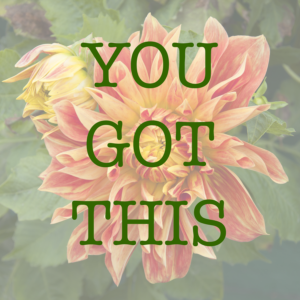Five Tips About Listings for Etsy Beginners
One of my friends always has the cutest and prettiest things. Years ago I’d ask her where she got them. She kept saying “Etsy,” matter of factly. I would nod like I totally knew what that was but I didn’t. I knew it was an online shop but it took me awhile to catch on. Over time I’ve realized just how awesome Etsy is and how many wonderful, authentic things one can find there.
Now I’m on the other side of it, trying to sell my own wares on Etsy. And by wares I mean my husband’s designs and my photos, along with personalized gifts. We opened a shop called Strength of Love, which is what we’ve called our blog for years. My husband works on designs and I do everything else behind the scenes on Etsy. At first I threw up a bunch of photography listings with what I thought they should say, using any keyword that popped into my head. Our shop wasn’t getting many views and the items just weren’t being found.
It’s been six months of learning in between caregiving. There have been ups and downs. There has been time spent that seemed wasted, yet with every day I’ve learned something new. Even though progress has been made, it can be a frustrating process. Things are finally starting to pick up and I learn more all the time. Here are a few things I learned while just getting started with adding Etsy listings. There is so much more to all of this but it’s a place to start. Hopefully they will help you as you begin on your Etsy journey as well!
1. Quality Listings Take Time
I figured this was going to be the case but it takes longer than I thought it would. Yes you can hurry through the fields of adding a listing. From start to finish a listing takes just a few minutes. Think of a title, go through the options, add a few words for the description, update the quantity and click the Publish button. Easy, right?! In a sense, yes. Etsy listings aren’t hard, but they do take time to be right.
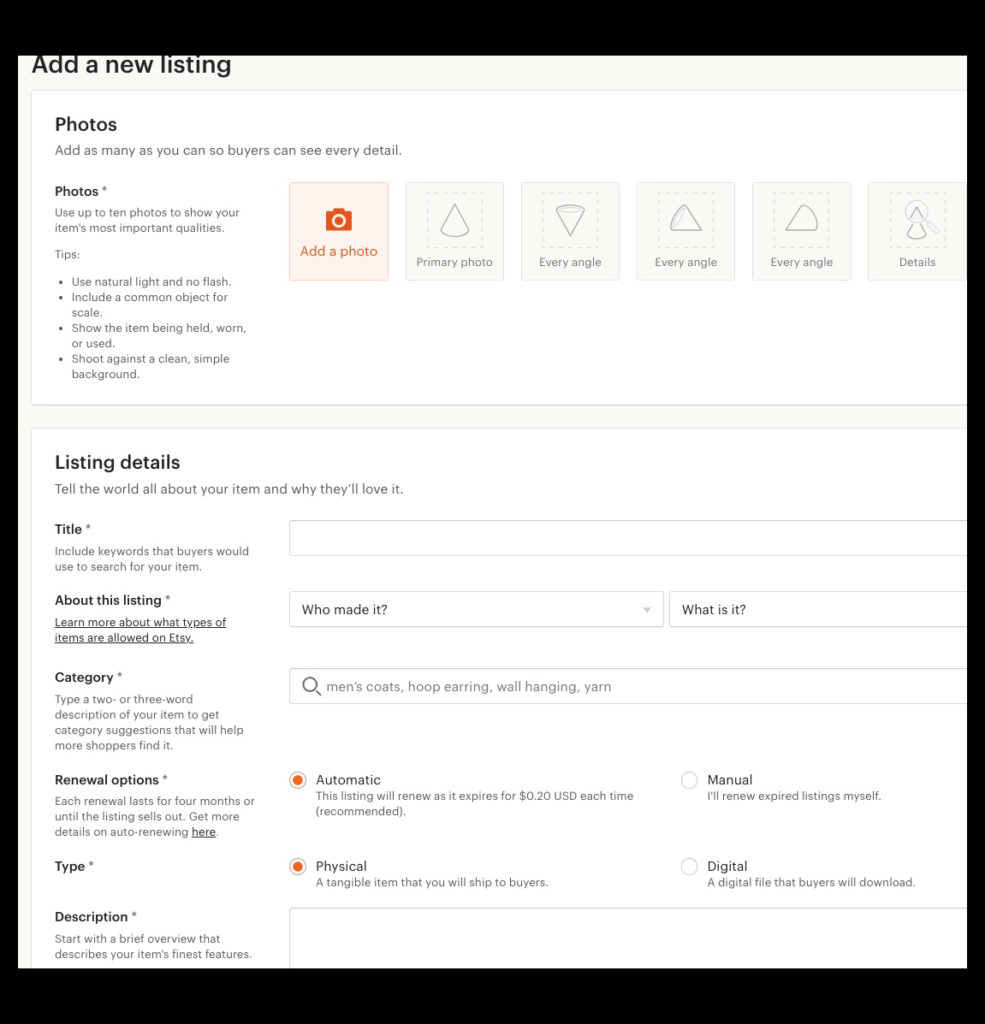
Adding a listing is as simple as completing a form and yet, so very important.
When I first got started I went through the process of adding some listings to the shop. I created titles and keywords that I thought made sense to me. Yet, some of what made sense to me is not what works in order to get ranked on Etsy. And that’s the name of the game. To get to the top of the rank in searches, both on Etsy and/or on Google. Having a shop and items means nothing if people aren’t finding them.
There’s this thing called SEO and it’s super important if you have any hope of getting your listings found in search. SEO stands for Search Engine Optimization. That means that adding a listing is much more than just completing the listing form on Etsy. SEO has a huge place on the internet but for now we’re sticking to the subject of it for Etsy listings. In the simplest terms, it means that the words you use for titles and keywords matter. (Etsy uses the term tags instead of keywords.) More on that in a minute.
2. Do a Little Research First
What products are trending these days? Can you make something that people actually want? Go to the Etsy homepage and see what is trending right off the bat. Jewelry is huge on Etsy. Home decor of all kinds is very popular. Seasonal items are another thing all together. See what items are selling and consider whether or not you are able to create things that will fall into a popular niche. Poke around different shops and see what items have a lot of sales and how their listings look.
There are online tools that are made to help. Marmalead is your friend. EtsyRank is your friend. These sites can show you listings associated with certain keywords. They will give you an idea of how that item is selling, and what the competition looks like. Marmalead is integrated directly with Etsy data. In addition, seasonality data has recently been added. I’m not paid to endorse these, I just use them both and currently pay for Marmalead. There are lots of tools online related to trends and keywords. Just Google something like keyword tools or current retail trends to get started.
You want to research the item that you might sell. How often are people searching for it? Is it seasonal or will it sell all year round? What is the average price that sellers are charging? How did they write their title and listing description? Can I compete in this category? Marmalead and EtsyRank are excellent sources for this data.
An item I sell is turntable slipmats. The first thing I do is start with the most basic keyword. I then use Marmalead and EtsyRank to see what kind of results are returned. I can see how many monthly searches are done, what type of engagement this item has, along with the number of shops competing with ours in relation to this item. You want items that have high searches, high engagement and low competition. That in itself is a challenge. To start, do research on your basic items and you can find your specific niche over a little bit of time.
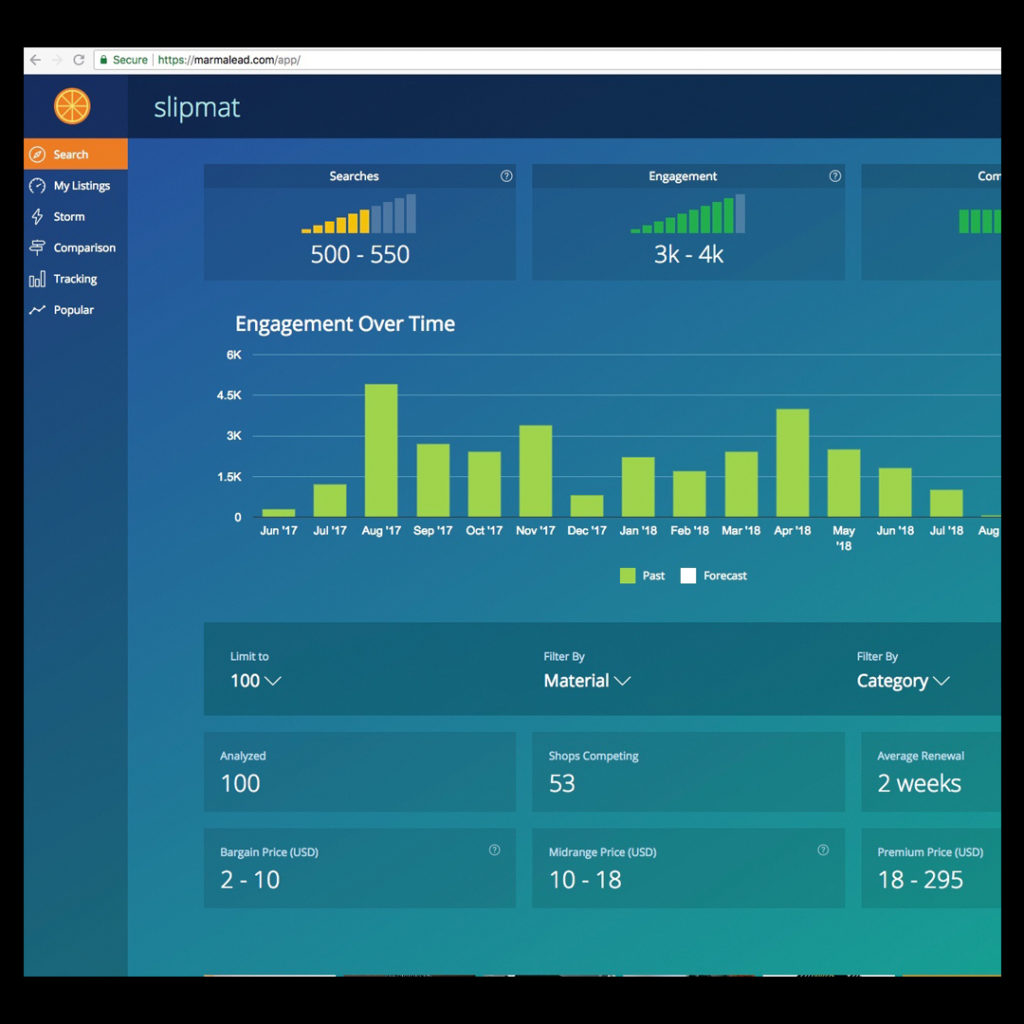
Results from a keyword search in Marmalead.
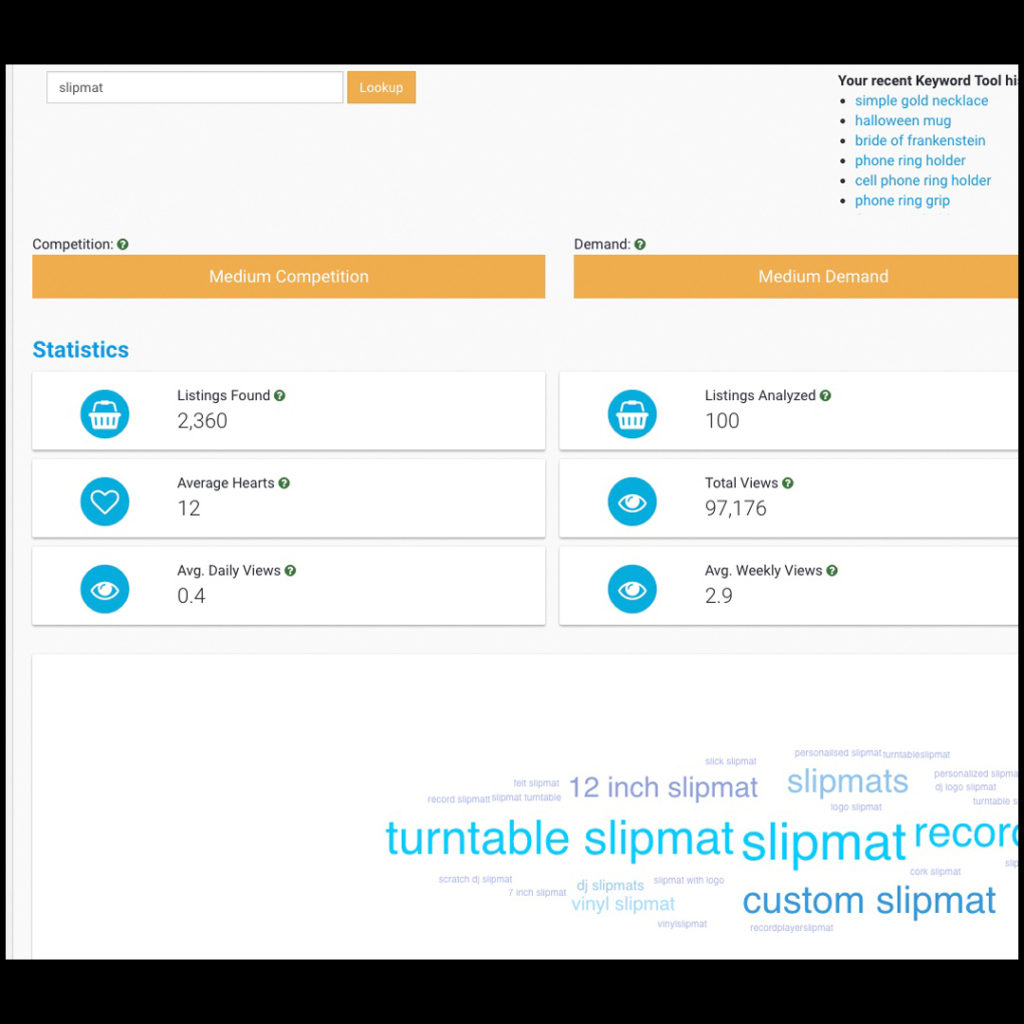
Results from a keyword search in EtsyRank.
I’ve been using Marmalead for about six months now and recently started utilizing EtsyRank as well. Both produce similar results with some variances in their data sets. Both have free/trial versions that help get you going when it comes to keywords and trends. And there are lots of videos and how to’s online for both programs, along with others. These two tools take a little time to learn but are both very user friendly. The time spent using them is well worth it. Coming up with keywords on your own can prove to be quite the challenge.
3. Titles and Tags Matter
It bares repeating. Titles and tags matter. (Etsy uses the term tags instead of keywords.) Remember when I said SEO before? Up there? Well this is it! This is where Marmalead and EtsyRank are super helpful. They’ve got some great analytics on keywords. GoogleTrends is another great tool. Remain mindful of what is popular right now. Keep your ear to the ground and think about how your creative items fit into categories that customers want and will look forward to receiving. More importantly, how would they search for that item? If you were the customer, what would you type into a search box?
Titles should accurately and specifically describe the item. Titles also need to contain keywords. Keywords are super important. Spend the time up front to research keywords and trends. There are more tools than the ones I’ve mentioned here, as well as many articles and videos online about SEO and keywords. Study up. The more familiar you become with keywords, the faster you can get at selecting the right ones. Using keyword tools helps your brainstorming sessions when it comes to the selecting the best titles and keywords for your items.
Back to slipmats as an example. After spending some time in Marmalead and EtsyRank, I would then search Google for that keyword, along with looking around on Etsy, Amazon and other sites. It’s worth just looking around to get a feel for an item. What are you seeing over and over? There you go, that’s what’s trending, that’s what’s working. Go from there and get more specific. Grateful Dead Slipmat, American Beauty Slipmat, Red, White and Blue Slipmat, etc. Focus on the first 55 characters of an item’s title, as this is most important to Etsy and Google. You’ll want to consider keywords while you work on titles. This is because the titles should contain as many keywords as possible. Just remember to keep the title of the item as relevant as possible.

The first 55 characters of an Etsy title are the most important. Both for Etsy and Google ranking.
At the bottom of a new listing there are spots for keywords. Again, Etsy calls these tags and there are 13 of them that you can use for your items. Use ALL 13 tags every time! These are related to customer searches and there is no reason not to use every single tag for every single listing! If you run out of ideas, consider how the item will be used. Would it make a good gift for a certain genre (i.e., ‘dad gift’ or ‘gift for mom’)?
SEO takes time (about 30 days) to be effective, so decide on your keywords then leave them for at least 3 months to gauge their effectiveness. It’s a good idea to review them every 6 months or so, just to ensure the words are still relevant and working. It’s also a good idea to update keywords with seasonal items as well. Just remember to update them while also allowing those 30 days for them to take effect.
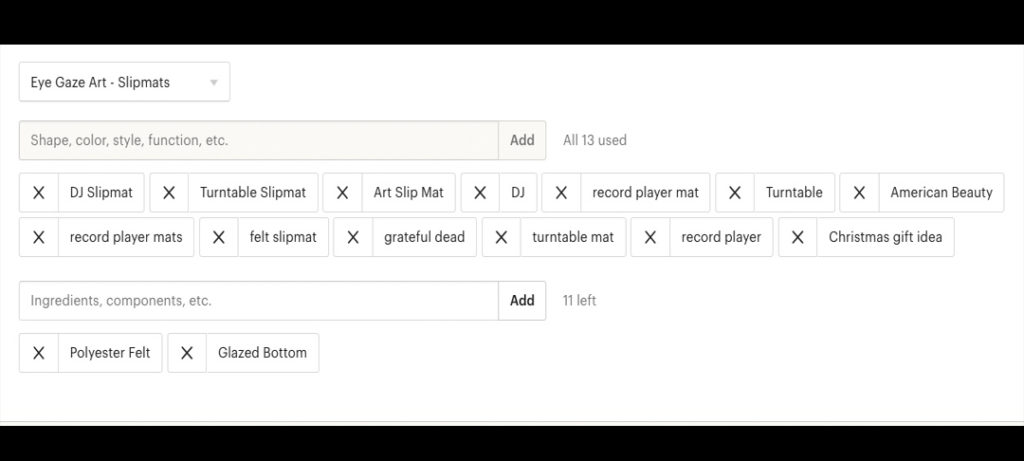
Keywords (tags) should be words that customers would use to search for your item.
Items should not have the exact same titles or descriptions. For one thing, they will be competing against themselves. Each listing should have a slightly altered title order and description so they do not appear to be clones. Duplicate content is a no-no among many platforms so be mindful of that now. It takes extra time but be sure that your listings are not exact duplicates. Many of your items will have the exact same information about them, and that is okay. Be sure the first 150 characters or so of listing descriptions are different. Just changing the sentence order slightly is enough of a change to be compliant.
Listing descriptions should include all the details about your item that a customer might like to know. Colors, sizes, production time, etc. Item descriptions take time to create as well. My suggestion is to take a look at competing shops, see how they have described their items, then use that as a start in order to craft your own descriptions. Work as many keywords as you can into the description while also ensuring it reads well.
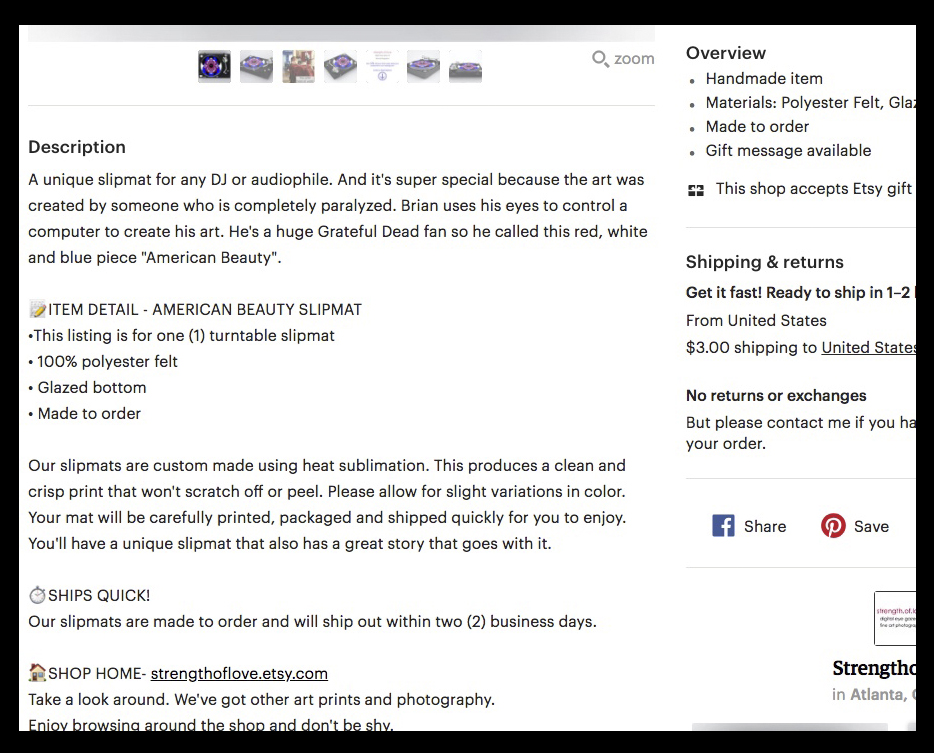
Descriptions should be clear and specific, answering any questions a customer might have.
4. Your Product Photos Aren’t Good Enough
I know. It hurts. I thought mine were good enough at first too. Good is fine but they need to be ‘oooooooh, I want my product photo to look that good’ good. Flat lays are great and fun to create. Environment shots are wonderful to show customers the products in use. These kinds of photos really enhance a listing. It’s the customer’s first impression. And you know what they say about those.
If you’re a great photographer with lots of experience with indoor lighting setups you can probably produce great product photos. I thought I could snap a few product photos no problem. Turns out, quality product photography is a lot harder than I thought it was going to be. I spent hours trying to set up the right scene, get the right angle, get the lighting just right. Turns out I’m way better at nature photography and there is an art to really great product photos. So I’ll continue to practice with that. In the meantime I’ve discovered a huge boost in productivity by using mockups. At some point, you might want to also consider a professional product photographer.
Take a look at the photos below. (I’m using note cards as most of my newer listings are in mockups, including slipmats.)
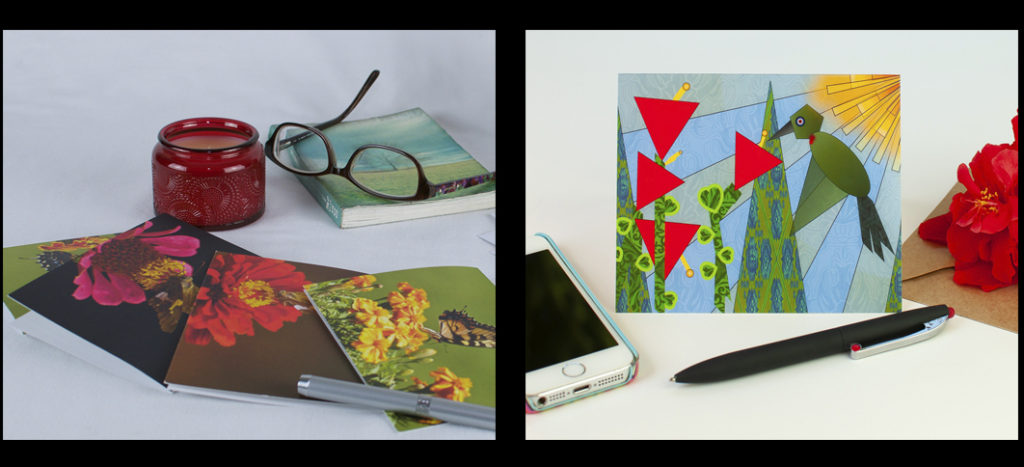
Product photography takes time and practice. The photo on the right is much better.
The photo on the left is one I used when getting started. After doing some research and looking at other shops I realized that photo was nowhere near good enough. I spent some time practicing and getting better with editing. The photo on the right is the result after some practice. I have found that mockups are a much better way to get great product photos in the amount of time that I have to get everything else done as well.
Mockups are typically photoshop files you can purchase to use for your products. Great mockups have a smart object layer that can be easily replaced with your photo to customize the product for your item. Others mockups are jpgs that need a little more fine tuning. Another topic in itself! Here is a quick video that shows you about mockups, which is what I used for the slipmat photos below. The bottom line is that your photos need to be really great. Sharp and detailed while also showing the item in use. I believe these photos hit the mark. Here’s a link to the actual listing.
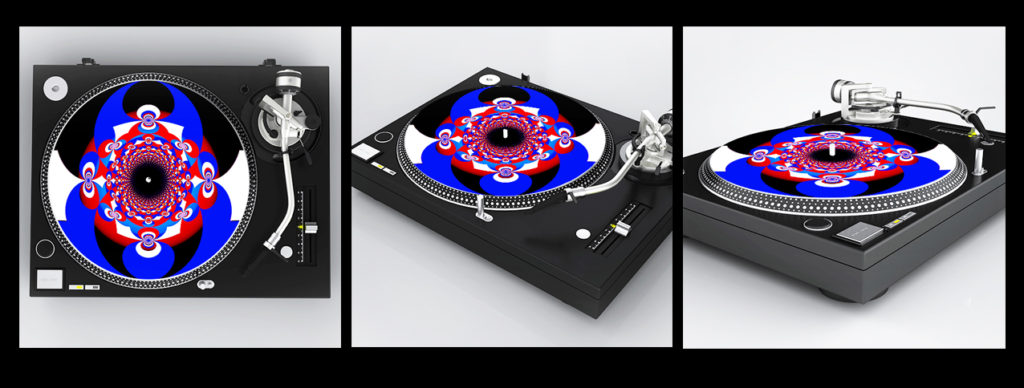
Slipmat photos using a mockup. They are sharp and detailed, showing the product from different angles as well.
5. Do It Right the First Time
This is often easier said than done, but try! It’s easy to get in a hurry and want to throw up a new listing just to have a new item in your shop. That’s fine but you’ll most likely end up having to go back and work on it some more. Slow down. Double check. Proof read. Send it to a friend to get a second pair of eyes on it. I have found that it’s best to spend the time to research the trends and keywords up front.
Typically you’ll have several types of one item. Do the work up front and you can build a template for that item and tweak each one from there. You might not feel like looking into that brand new keyword at midnight but tomorrow is a full day and if not now, when? Spend a few minutes on the competition’s shop pages and see what is working for them. It’s much better to do the best you can on a listing before it goes up. It’s awful to come across an active listing and you realize that a word is misspelled or to see that part of the listing was copied from a mug listing. And you’re looking at a shirt listing. Oops!
Good Luck on Your Etsy Journey!
There are lots of things about Etsy I wished I’d known before I got started so I thought I’d share this information in the hopes that it can help someone else who is just getting started. Best of luck to you on your journey. You can do it!
